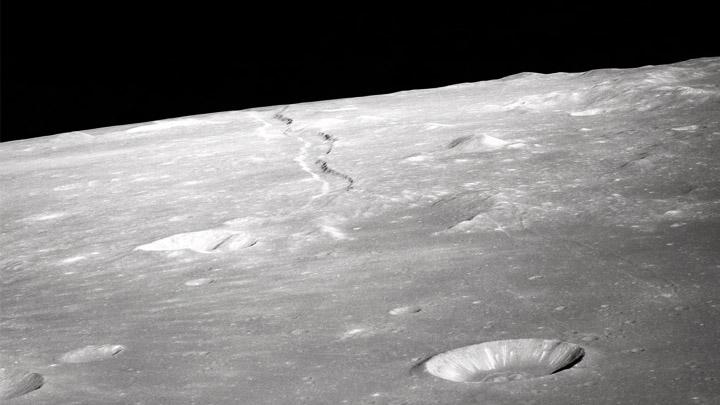Out of this world: Lunar sample comes to Calvin

In February 2016, Renee Sparks, the director of Calvin’s Bruce Dice Mineralogical Museum, contacted public affairs specialist Jennifer Knotts at NASA and requested meteorite samples to display in the museum. What Knotts offered instead, though, was quite different.
“I requested a suite of meteorites, but [Knotts] responded by saying she was happy to loan out a single lunar sample instead,” Sparks said. “I said that sounded great!”
Sparks says due to the strict security requirements, there aren't a lot of colleges and universities that can host a lunar sample like this one. She had to personally pick up the lunar sample from the Johnson Space Center in Houston, Texas, as it cannot be shipped for security reasons.
“You have to have the appropriate security with a double-lock system in your museum [to display a lunar sample], so because of this wonderful facility we have, we meet their security requirements,” Sparks explained.
Moon Rock
This particular lunar sample comes from Apollo 15's mission to Earth’s moon in 1971. “It’s not a very exciting rock, but something truly beyond value—it’s history,” Sparks said.
To Sparks, displaying this lunar sample and other rocks and minerals in the museum is an opportunity for Calvin to showcase the beauty of God’s creation, especially with rare findings that few have the chance to study closely.
“I think the quality of this museum is quite rare,” Sparks said. “I love that, although this museum has an educational component, it is more about recognizing the beauty in God’s creation, and the depth and eternal nature of it when we look at things from a larger perspective.
Displaying God's vast creation
When [Dice] wanted to display the beauty of God’s creation, he made sure the museum was well lit so that you could see things like the crystal faces, luster, shape and other characteristics that are visible,” she added. “It is part of our responsibility as witnesses for Christ to give God the glory, and take opportunities to display his creation like this.”
A reception will be held Monday, November 28 from 7–9 p.m. in the museum to commence the showcasing period of the lunar sample. The reception is sponsored by Calvin’s geology, geography and environmental studies department, as well as the geology club. If the sky is clear, Calvin’s observatory will be open from 7:30–11 p.m. as well.
Fall hours for the museum will continue as Wednesday through Friday from 12:30–4 p.m. The lunar sample will remain in the museum until February 16, 2017. More information can be found on the museum page on Calvin’s website, or the museum Facebook page.






